
Research Paper By Kalaivani Mattern
(Cross-Cultural Coach, INDIA)
Thought Leadership Article on Cross-Cultural Coaching
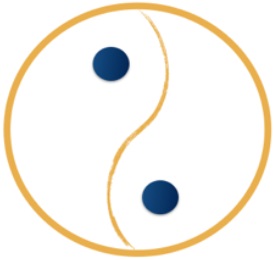
1. Introduction
Globalization and rapid growth in consumer markets have made mobility in business a necessity. Along with disappearing market boundaries, gone are the days when a job was 9-5 (local time) and involved a desk. Today our workplace has become a global village in an electronic Universe. We have the ability to work with people thousands of miles away with the ease of talking to a neighbor; physical distance and time zones are not a restriction anymore. On the other hand, people still remain people, each of us have our own expectations about how things work. We function by certain ‘unwritten rules of social game’.
As social beings, we like to belong to a tribe, even the lone-wolves among us seek some form of company at times. To belong to a tribe implies following a set of rules that define and hold the tribe together- these rules could be a based on ethnicity, nationality, region, religion, corporate, familial ties etc. When tribes meet, they usually have to learn the rules of one another, if there is to be any kind of mutual gain. It is also necessary to know the rules to avoid conflict.
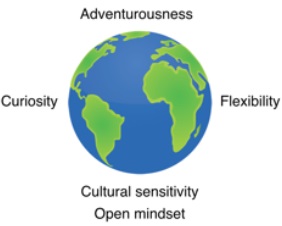 What happens though when the “other” rules are contradictory to our own set of rules? What if, for example, the other tribe’s definition of honesty is different from ours? Can there even be two definitions for values like honesty? How do we deal with these definitions in a business setting where the focus is on performance rather than (personal) values?
What happens though when the “other” rules are contradictory to our own set of rules? What if, for example, the other tribe’s definition of honesty is different from ours? Can there even be two definitions for values like honesty? How do we deal with these definitions in a business setting where the focus is on performance rather than (personal) values?
This is where cultural competence and personal profiles come into play. According to an executive summary of a capstone research survey, (Kelly Ross 2011)2, five hypothesised characteristics were considered to describe successful expatriates: adventurousness, cultural sensitivity, curiosity, flexibility, and an open mindset.
The above survey showed that these characteristics are critical to an expatriate’s success: 95-97% of the respondents rate each of the characteristics as moderately or very important.
Being competent in these five characteristics leads to not only a better performance by the expat executive, but also for the company: a successful executive improves overall morale both in home and host teams and that could lead to a significant improvement in company’s functioning, for example, in a new market.
In this article, I would like to explore how coaching can support the development of these characteristics which are deemed so important while living and working away from ‘home culture’.
1.1 How can an individual gain expertise in these five factors?
If we take the factors individually, other than cultural sensitivity, all others are personal traits which
can be nurtured but not necessarily always learnt.
Cultural knowledge can be obtained through trainings but developing a sensitivity needs more than a surface level training.
In my view, training is transference of knowledge and coaching is supporting a client in applying this knowledge to the best of his/her ability. I see coaching as a way for clients to own the knowledge gained through the training and to adapt it for their needs. Training is a crucial first step in getting to a good start and coaching is the next step that helps sustain that momentum and complete the assignment successfully.
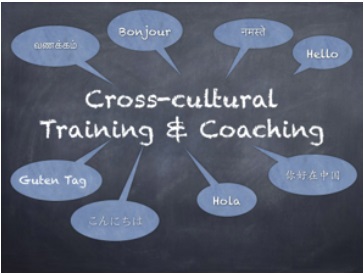 A mix of training and coaching in the form of blended coaching could be a real opportunity to develop and sustain the above mentioned factors of adventurousness, curiosity, flexibility and cultural sensitivity along with an open mindset.
A mix of training and coaching in the form of blended coaching could be a real opportunity to develop and sustain the above mentioned factors of adventurousness, curiosity, flexibility and cultural sensitivity along with an open mindset.
2. Training
2.1 Why is training necessary?
It has been observed that cross-cultural training and language training, positively affects crosscultural adjustment and leads to success in expat assignment.3 (Riku Laine, 2013)
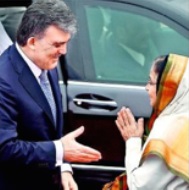 If we take India as an example, every assignment needs a very clear and specific training for people who have not lived in India for an extended period of time – this period varies from person to person just like in any acclimatisation but if you are expected to deal with daily life in India, develop processes/strategies or market a product in India, then just trying to ‘wing’ it, is going to be extraordinarily difficult – especially, since India (Brookfield Global Relocation Survey, 2014)4 has been rated as one of the top three countries as the most challenging for international assignee and also one of the top three with the highest rate of failure in expat assignments since 2012.
If we take India as an example, every assignment needs a very clear and specific training for people who have not lived in India for an extended period of time – this period varies from person to person just like in any acclimatisation but if you are expected to deal with daily life in India, develop processes/strategies or market a product in India, then just trying to ‘wing’ it, is going to be extraordinarily difficult – especially, since India (Brookfield Global Relocation Survey, 2014)4 has been rated as one of the top three countries as the most challenging for international assignee and also one of the top three with the highest rate of failure in expat assignments since 2012.
There are very very strong regional differences in the Indian sub-continent that becomes visible only when you start working closely with a multi-regional team. This makes it providing just one standard training package to India very difficult. Subtle and some times not-so-subtle regional differences should be included in trainings as this could be vital to opening new markets in India. Only if we know that such differences exist, can we adequately prepare for any project and that is best done in a training environment. Trainings can also effectively deal as an anti-dote to stereotyping as promoted in popular culture through television and movies.
2.2 Why is then training not enough?
My clients’ experiences and mine have made me realize that training alone is not a complete recipe for a successful expat assignment/emigration – especially if the problem is not understanding the cultural variation but in adapting one’s reaction to those variations. Emotional intelligence and personality types play a huge role in cross-cultural relationships – be it in professional settings or personal relationships.
For example, open mindset presumes a certain willingness ‘to learn’. This high priority characteristic is a personal trait which training cannot ‘teach’ but coaching can help develop. Learning style, feelings around learning a new language, what if learning leads to great amount of stress in the executive’s life – these are some of the topics that can be better addressed in coaching.
In case of emigration, people might need support with issues such as discrimination/stereotyping or dealing with underlying beliefs, they might need support with raising children/caring for ageing parents in a different culture. Although counselling is offered nowadays on variety of these subjects, it does not always foresee a partnership with the client, which, I feel might be necessary for a positive effect to manifest itself.
Some times, training gives executives even a sense of false security that one “knows” everything there is to know about a culture and then in every day life expats wake up to the reality that just knowing is not enough but how you deal with it on a daily basis plays a far bigger role.
3. Coaching
In an article in Harvard Business Review, Dr. Andy Molinsky, ( an Associate Professor of Organisational Behaviour at the Brandeis International Business School) writes:
Sometimes, it’s quite frustrating and even dysfunctional to cater to others’ (cultural) differences, particularly when it means you can’t get your work done. So when do you demand compliance, and when do you just let things go?
The key in this question to me is ‘you’ – specifically ‘you’, not the trainer or mentor with their experiences but you, the individual, who is facing the situation – how is this expat executive going to handle it?
In the following sections, I provide examples from my work-life experiences that support my case for blended coaching as a valuable approach for successful expat assignment or integration of immigrants.
4. Coaching for successful cross-cultural experience
4.1 Adventurousness, Curiosity – Appreciative Inquiry
The first one is a retrospective case study based on my own personal experience as a supervisor of international student trainees. Although I was not a certified mentor (or coach) at that time, my role as supervisor was also to mentor student trainees to adjust to their new life and job in Germany and get them to perform their roles within the company.
 One of the challenges these trainees faced, was not being able to understand the language but there was a marked difference between the trainees- some did not feel hampered by this while others felt left-out. The former group tried to pick up what they could, formed friendships and made every effort to fit-in, while the latter got frustrated.
One of the challenges these trainees faced, was not being able to understand the language but there was a marked difference between the trainees- some did not feel hampered by this while others felt left-out. The former group tried to pick up what they could, formed friendships and made every effort to fit-in, while the latter got frustrated.
The latter group, I felt, were more afraid of judgement. I tried to support them on learning the language and also meeting others who spoke the same language as them, but was not always successful. Although this group was curious about many things, they were hesitant to take action. As a mentor-manager, I was unsure about how much I should push and whether I could do this without being judgmental and hence reinforce the fear of negative judgement the trainee already feels.
Now with my coach training, I realize, how a coach could approach such a situation with appreciative inquiry. The issue was not just the ‘language barrier’ but more of an underlying belief system of ‘what-would-others-say’. If the same situation would arise now, I would perhaps start the conversation by asking them about their dreams and aspirations on why they chose to live/work/study abroad. Then discuss the status quo and ask how ready they are to cross that gap and work way their way up to making their dreams, a reality.
This would have helped nurture the flame of their adventurousness and curiosity, rather than push them back into worrying about judgement and making mistakes. Coaching clients to connect with their sense of adventure and curiosity, and making it the base for further explorations would assist them in overcoming non-supportive underlying beliefs.
4.2 Flexibility – Reframing perspectives, Emotional Intelligence
The following case illustrates and explores the question that was posed in section 3 about cultural differences being a hurdle to business.
In broad strokes, India and Germany could be considered as two opposites in how ‘time’ is perceived. Germany follows mono-chronic time system, where things are done one at a time and time is scheduled, arranged and managed. India, on the other hand, mostly follows a poly-chronic time system- a system where several things can be done at once, and a more fluid approach is taken to scheduling time. When these systems meet, problems could crop up, unless and until the individual in question is flexible enough to manage such differences.
In his book ‘Global Dexterity’, Dr. Andy Molinsky explores the need to being 5 flexible enough to handle what he calls the three type of challenges: competence, authenticity and resentment challenges. A global leader is expected to deal with all three with aplomb and no adverse effects but in reality, this is a behavioral change issue and would profit a lot from supportive coaching.
The following case illustrates this point:
 My German family treats time as a commodity that should be portioned out carefully while my Indian family sets priorities based on how close to the person you are and hence time can be stretched or shortened accordingly to fit the person.
My German family treats time as a commodity that should be portioned out carefully while my Indian family sets priorities based on how close to the person you are and hence time can be stretched or shortened accordingly to fit the person.
My husband, who is German, knows that India works differently but it still angered him whenever “time was wasted”. He had to work on how far he is willing to accommodate the other culture. He realized that there are times when he should expect compliance but there are times where it is necessary to understand ‘time’ is investment in relationships.
He had to work on his underlying belief that time is somehow wasted, for example, when a person does small-talk before getting to a point, or if I stop to chat with the vegetable-vendor. He will still not compromise on his value of punctuality and insists on being on time but has become flexible enough to accept that the others might see it differently.
Some times even if the expat executives adjust to a different time orientation, they still face the problem of communicating with headquarters back home. Usually, managers at headquarters have no or little tolerance for different ways of getting things done. They may push for processes where as a more relaxed approach might be more productive and the expatriate may feel squeezed in the middle 6 (Riku Laine, 2013).
He had to develop coping mechanisms to help him with cultural differences – he has now learnt to surf rather than swim against the current or worse, drown in frustration.
A coach would be able to work with the client to exercise his/her emotional intelligence and reframe some of the dis-empowering feelings – support the client in being flexible at times when it is most difficult or goes against his/her core values. This way the client becomes “dexterous” but not lose his/her authenticity.
4.3 Cultural sensitivity & open mindset – blended coaching
It is my belief that to be able to be culturally sensitive, one has to realize that people are fundamentally different and that these differences are to be respected. To be able to realize that one’s own culture is not the norm or universal (ethnocentric), we need cultural training (as discussed in section 2.1). To be able to take that learning further and to truly respect and work with other cultures, one needs to look inwards and have an open mindset.
Open mindset is, in my opinion, the same as a growth mindset, which is the belief that people can learn and grow under all circumstances, even adverse ones.
 One of my clients was a young lady that took up a tough assignment in India without much hesitation because she was looking for adventure. She also has had exposure to other cultures and was confident about living and working in a different country. When she started working at her institution in India though she realized rather early that she needed help – she needed comprehensive cultural knowledge and coaching to help her adapt this knowledge to fit her values. She needed to open her mind to possibilities that were not readily visible to her.
One of my clients was a young lady that took up a tough assignment in India without much hesitation because she was looking for adventure. She also has had exposure to other cultures and was confident about living and working in a different country. When she started working at her institution in India though she realized rather early that she needed help – she needed comprehensive cultural knowledge and coaching to help her adapt this knowledge to fit her values. She needed to open her mind to possibilities that were not readily visible to her.
In her case, I offered my services in the form of blended coaching: training for a day covering most of her questions and then 6 sessions of coaching exploring various challenges that she was facing and her general well-being in terms of time-management, health and social life.
One of the challenges she had to face was the differences in style of communication. She saw the indirect answers given by her Indian staff as dishonesty till she realized that they do so, to avoid confrontation or some times, even in the belief of protecting her from paperwork! She had to learn “to read between the lines” and also watch out for changes in tone and non-verbal gestures.
Just knowing this did not help her though, it was exhausting for a person from a direct culture to have to constantly watch out for these signals and sub-textual clues. Coaching helped her open up about values like trust and honesty, feelings around language barrier etc. She was able to explore possible resources, for example, intermediaries between her and her staff. She realized that however sensitive she was, this behavior of decoding an indirect communication is not going to come easy for her. So she also looked in to creating a supportive network that would help her relax after work so that she can recharge after a stressful day.
This approach of blended coaching gave her the specific knowledge and confidence to extend her stay in India which was an outcome she did not expect! Her goal in the beginning was just to survive but she found ways to go beyond that and flourish with the help of blended coaching.
4.4 Coaching a diverse group
In this section, let us look at a scenario from another perspective- of a mono-cultural group working with an individual/group who is from a different culture. There is a lot of material on this in terms of diversity, team-building, confidence-building and from an anthropological views on gender and ethnicity etc which is beyond the scope of this article. This section will focus on the idea of blended coaching as a tool in supporting diversity.
As already mentioned, humans are social beings and our behaviors are influenced and evolve in conjunction with others around us . A whole branch of science called ‘Social Thinking’ is dedicated to studying this effect.
A new member from a different tribe joining an existing group may be respected but, more times than others, may be looked upon as an annoyance or even a threat. Let us explore the ‘why’ of this first. It could be because our fear of the unknown or perhaps, even a fear of competition, judgement, superiority/inferiority etc with or without a foundation.
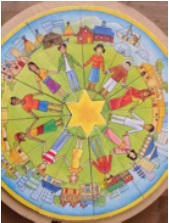 If we take the global workplace as the arena, an individual/team chosen for a particular job with a unique skill-set joining a group might be expected to undergo a seamless integration with the existing team. This might look like an ideal case proving “when in Rome, be a Roman” but is it as good as leveraging diversity? Isn’t ‘diversity’ the point of having the new member join the group?! ! Diversity leads to different perspectives on the same issue, which in turn may lead to innovation which is a great asset to performance driven market places.
If we take the global workplace as the arena, an individual/team chosen for a particular job with a unique skill-set joining a group might be expected to undergo a seamless integration with the existing team. This might look like an ideal case proving “when in Rome, be a Roman” but is it as good as leveraging diversity? Isn’t ‘diversity’ the point of having the new member join the group?! ! Diversity leads to different perspectives on the same issue, which in turn may lead to innovation which is a great asset to performance driven market places.
How can coaching support this?
Although the five characteristics we have discussed in the previous sections are looking at it from a individual point of view, it holds same for a group. A team that is adventurous enough to take calculated risks, is curious, flexible, open and sensitive to each other’s needs would perform much better than a closed one. And coaching can support a team to become a cohesive unit with the same principles as for an individual.
I have provided coaching based cross-cultural training for such groups – both in India and in Germany- and have always seen more willingness to be open than closed. Coaching can build on this willingness to co-operate and drill down deep into challenges facing the team. Activity-based coaching can be a way to approach this, where members can bond and see the “outsider” as a person instead of a stranger or a threat. A coach can also help the team try out a role-play where they put themselves in the other person’s shoes (e.g. Transcultural emails game7).
Oscar Wilde once wrote
Society exists only as a mental concept; in the real world there are only individuals.
I firmly believe that cultures could be complementary instead of contradictory, and that is where I always start my blended coaching from. A positive outlook and a firm belief that diversity brings in better performance provides a platform for an open discussion. The group should also feel safe in opening up on their opinions about the other culture even if this is highly subjective, stereotypical or even negative. Blended coaching provides such a space as explained in my coaching model with a campfire analogy8. It also supports the development of internal frameworks for the individuals and the team as a whole for a successful cooperation in the present and the future.
Conclusion
The opportunity to live and work in/with another culture could be an enriching experience, if approached with curiosity, adventurousness, flexibility and a growth mindset.
Coaching can support an individual’s growth to include cultural elements while focusing on one’s values and beliefs, actions and emotions. Coaching can help promote harmony in cross-cultural teams. It can provide space for introspection and reflection on situations and support clients in working out a plan, either aim for new shores or set boundaries, de-stress and to let go or to get back on the saddle for more action.
And who knows what one might discover about oneself in such a case – the yin to the other culture’s yang, perhaps?
When you find yourself in some far off place and it causes you to rethink some things You start to sense that slowly you’re becoming someone else And then you find yourself…- Find yourself, Brad Paisley
References
Bibiliography
Hofstede G, 1991. Cultures and Organizations: Software of the Mind. London: McGraw Hill.
Molinsky A, 2013. Global Dexterity. Boston: Harvard Business Review Press.
Brookfield Global Relocation Trends Survey Report 2014.
Caligiuri, P., Phillips, J., Lazarova, M., Tarique, I., & Bürgi, P. (2001). The theory of met expectations applied to expatriate adjustment: The role of cross cultural training. International Journal of Human Resource Management, 12(3), 357-372.
Websites and other resources
Kelly Ross (MSLOC 2011). Characteristics of Successful Expatriates: Unleashing Success by Identifying and Coaching on Specific Characteristics
Riku Laine, 2013. Bachelor’s Thesis Abstract. Turku University of Applied Sciences.
Andy Molinsky (2015). Mistake most managers make
Dr. Geoffery Abbott (2014). ICF Cultural Competency in Coaching Community of Practice Seminar: Coaching for a Global Mindset-Deep Conversations for Thriving in Complexity
Thiagi Training games
Source for photo in section 2.1: Turkish president Mr. Gul meeting the then Indian president Mrs. Patil in Feb 2010.
Footnote
1 Hofstede G, 1991. Cultures and Organizations: Software of the Mind. 1 London: McGraw Hill.
2 Characteristics of Successful Expatriates: Unleashing Success by Identifying and Coaching on Specific Characteristics
3 Riku Laine, 2013. Bachelor’s Thesis Abstract. Turku University of Applied Sciences.
4 Brookfield Global Relocation Trends Survey Report 2014
5 Molinsky A, 2013. Global Dexterity: How to Adapt Your Behavior across Cultures without Losing Yourself in the Process. Boston: Harvard Business Review Press.
6 Riku Laine, 2013. Bachelor’s Thesis Abstract. Turku University of Applied Sciences.
7 http://thiagi.net/archive/www/pfp/IE4H/february2004.html#SimulationGame
8 Kalaivani Mattern, 2014. The Quest – a coaching model. International Coach Academy.
